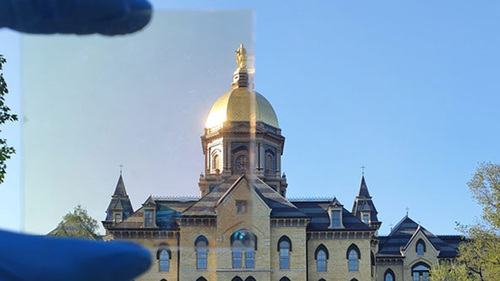| Nov 30, 2022 |
Engineers use quantum computing to develop transparent window coating that blocks heat
(Nanowerk News) Cooling accounts for about 15 percent of global energy consumption. Conventional clear windows allow the sun to heat up interior spaces, which energy-guzzling air-conditioners must then cool down. But what if a window could help cool the room, use no energy and preserve the view?
|
|
Tengfei Luo, the Dorini Family Professor of Energy Studies at the University of Notre Dame, and postdoctoral associate Seongmin Kim have devised a transparent coating for windows that does just that (ACS Energy Letters, "High-Performance Transparent Radiative Cooler Designed by Quantum Computing").
|
|
The coating, or transparent radiative cooler (TRC), allows visible light to come in and keeps other heat-producing light out. The researchers estimate that this invention can reduce electric cooling costs by one-third in hot climates compared to conventional glass windows.
|
 |
| Notre Dame’s Golden Dome partially photographed through a sample (top left) of a transparent radiative cooler coating. (Image: University of Notre Dame)
|
|
Transparent radiative coolers can be used for buildings and cars to help address climate change challenges. Luo and his team were able to design their best-in-class TRC by using quantum computing combined with machine learning.
|
|
The TRC is made up of multiple ultra-thin layers of materials that must be assembled in a precise configuration. By constructing a computational model of the TRC, researchers were able to test each possible configuration of layers in a fraction of a second to identify the optimum combination and order of materials.
|
|
Guided by these results, they fabricated the new coating by layering silica, alumina and titanium oxide on a glass base — topping it off with the same polymer used to make contact lenses. The result was a 1.2 micron-thick coating that outperforms all other heat-reducing glass coatings on the market.
|
|
“I think the quantum computing strategy is as important as the material itself,” said Luo. “Using this approach, we were able to find the best-in-class material, design a radiative cooler and experimentally prove its cooling effect.”
|

